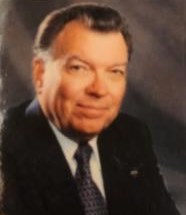
OBITUARY
Addison Leroy Bain
September 23, 1935 – January 22, 2025

It was determined that another scientist was needed in the universe to study the galaxy and stars. You can determine that, if you see his room with various rockets and pictures from the Hubble telescope.
He was born in Kalispell, Montana, on September 23, 1935, the first child of Arthur and Dorothy Bain. He is survived by daughter Debra Lindsay, and grandson Justin, granddaughter Tiffany of Prineville, Oregon. Brothers, Stanley Bain of Melbourne, Florida and Daryl Bain of Kalispell, Montana, along with numerous nieces, nephews, cousins, and friends.
After graduating from Flathead High School, he went on to Montana State University at Bozeman, Montana to earn his degree in Engineering. Addison’s first major job was to work with an engineering firm to build the Noxon Rapids Dam in Noxon, Mt. He then was drafted into the Army and was stationed at Ft. Ord, California. After basic he was assigned to Redstone Arsenal, Huntsville, Alabama. That began his venture in the aerospace community. He was assigned to Dr. Wernher von Braun’s engineer team with the mission of developing and testing rocket systems. Later NASA offered him a job to continue the same work in developing mainly propellants and life support systems. He worked on space programs, including the Atlas V, Delta II, Taurus, Saturn and Falcon and orbiting programs Mercury, Gemini and Apollo and the first space shuttles. He became friends with many of the Astronauts, and was awarded the snoopy pin, a symbol of the Astronaut corps. During his career he designed a safe way to transport hydrogen and other fuels. His responsibility became Chief of Propellant and life support systems. During that time, he squeezed in time to go to night school to earn his MS and PhD. degrees.
Addison became involved with hydrogens capabilities which lead him to the Hindenburg airship disaster. The more he studied the Hindenburg and pictures of the flames from the fire he knew something was not right. Addison speculated that hydrogen could not be the reason for the explosion and fire. He made several trips to Germany and met with several survivors and collected many artifacts from the event along with several large pieces of the outer layer. On one of his trips to Germany he found a library that had original drawings and design of the Hindenburg. Through his tests, studies and investigation he found that the outer fabric of the Hindenburg was coated with a doping process that was highly flammable. The Hindenburg landed at Lakehurst Naval Air Station in Manchester New Jersey on May 6, 1937. From eye witness reports and research of the day, it appeared the airship acquired static electricity due to storms, when the airship touched the mooring mast the resulting static electricity ignited the fire which burned through the outer layer and eventually into the fuel cell, containing the hydrogen. The hydrogen fueled the fire.
He wrote the book ‘Hindenburg’ about his research. A model of the Hindenburg is displayed at the Smithsonian’s National Air and Space Museum in Washington, DC. The original plaque on the wall was replaced with his findings. Addison was invited for that unveiling.
His interest in hydrogen continued, he converted his car, a Lincoln to run on hydrogen however, he needed a way to acquire the fuel so he built his own fueling station in his garage. Of course that got the neighbors excited. He demonstrated to the neighbors, fire department and Mayor, along with the media how the hydrogen was extracted from water then pumped into storage containers. He drove the car for several years, donating the car and hydrogen system to the local university.
During his career he received several awards and recognitions for his work. He traveled to many places, but his favorite was having a red beer at Moose’s Saloon in Kalispell, MT and fishing at his favorite place, the Twin Creek’s on the South Fork of the Flathead River and spending time at the Diamond R Ranch at Spotted Bear.
Addison’s request was to be cremated and buried near family at Glacier Memorial Gardens in Kalispell, Montana. Graveside services will be scheduled for later this summer.
Show your support
Add a Memory
Share Obituary
Get Reminders
Services
SHARE OBITUARYSHARE
- GET REMINDERS
v.1.15.0